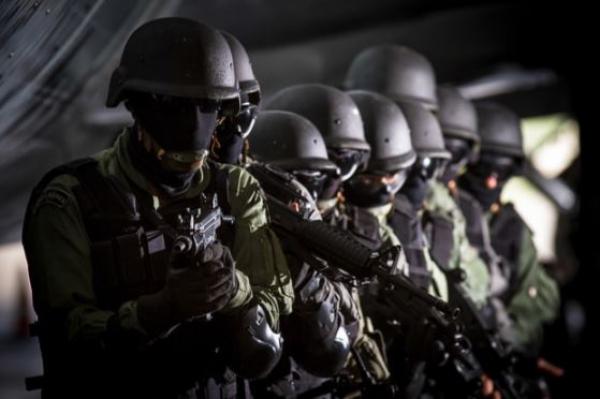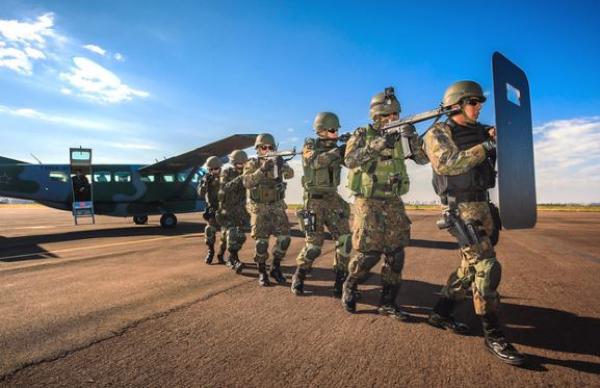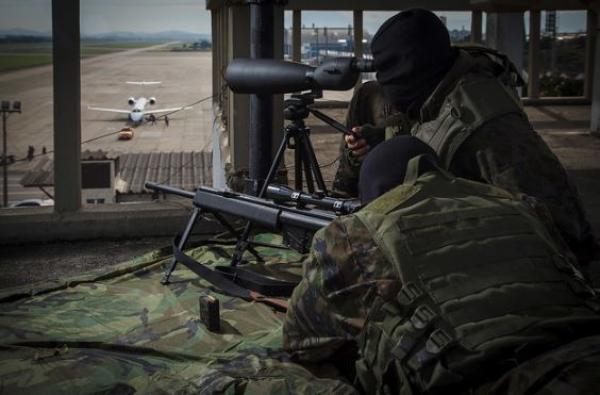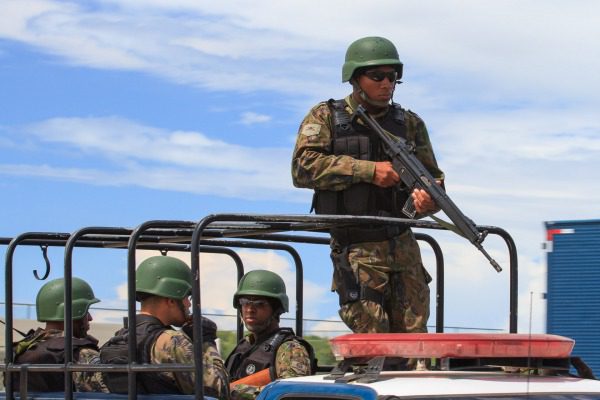More than eight decades performing the Force Protection Task on behalf of FAB’s constitutional mission
Air Force Agency, by Lieutenant Eniele Santos
The history of the Air Force Infantry goes back to the creation of the Ministry of Defense, in 1941, when the first six Infantry Guard Companies were established in Belém, Fortaleza, Recife, Galeão, Natal and Salvador. Since then, the need to ensure the security of Air Force installations and means, among them, aircrafts, was already decisive.
In these 81 years, the Air Force Infantry is present and essential to the fulfillment of the Brazilian Air Force mission of “maintaining the sovereignty of the air space and integrating the national territory, aiming at the defense of the homeland”. Thus, it currently executes the most varied operational activities associated with the three areas of action: Security and Defense, Aerospace Defense and Special Operations, all of which are jointly directed towards specific Air Force Actions.

The Security and Defense area includes Facilities Security, Air Force Police and Surface Self-Defense. The Aerospace Defense area corresponds to Air Defense; and the Special Operations area includes Direct Actions, Special Reconnaissance, Counterterrorism and Advanced Air Guidance. In addition to these areas, infantrymen can also execute Search and Rescue and Combat Search and Rescue actions.
Each action corresponds to one or more sets of specific techniques, tactics, and procedures, which represent operational activities. From the mapping of these activities, it is possible to identify the knowledge, skills and attitudes associated with the exercise of each one of them, allowing the establishment of the Infantry Troop’s operational preparation process.
In recent years, from the armed conflicts of the 20th and 21st centuries, unleashed in the global context, the mastery of the air and the ability to generate and sustain air strikes, against an opposing force, made it necessary for the Brazilian Air Force (FAB) to have a certain number of airfields and airspace surveillance sites, capable of being maintained to support these missions.

Thus, the deployment related to the implementation of Surface Self-Defense in the Brazilian Air Force (FAB) began, in order to generate the capability to provide the aeronautical facilities with a safe environment, by detecting, engaging and neutralizing hostile forces that threaten their operation, by employing specialized troops, in the context of a broader and more complex environment, which involves the presence of an opponent, willing to inflict damage to the operational capability of air carriers, when in their most vulnerable condition: stationed or operating on the ground, as well as in landing and takeoff maneuvers.
The Preparatory Command (COMPREP), through the Security and Defense Sub- Directorate, has an important role in the issue of doctrinal norms and publications, which reach not only the 33 Infantry Units distributed throughout the national territory, but also all Military Organizations, through the Air Force Security and Defense System (SISDE).
In recent years, the experiences gained from participating in Major Events, in Joint Exercises, in Law and Order Operations (GLO), and in Peace Operations, under the aegis of the UN, have provided significant operational gains, contributing to technical improvement and an even greater involvement with the career.
In this sense, the word interoperability defines the performance of the Air Force Infantry, since it encompasses the sum of efforts, the integration of actions, and the compatibility of techniques, tactics, and procedures applied to various activities.

Officer Education
Infantry Officers are trained at the Air Force Academy (AFA) where they study not only the compulsory college level subjects, but also receive technical and specialized instruction.
Military instructions make up the cadets’ training curriculum and aim to qualify them for leadership performance. They also aim to provide the opportunity to apply the techniques and tactics learned throughout the academic course.
There are also several exchanges with other military academies in friendly nations, such as the United States, Argentina, and Uruguay, among others, in order to promote the cadets’ cultural enrichment.
At the end of the four years of training, the cadet is declared an officer aspirant, takes back the cadet swordsmanship and definitively holds the Air Force officer’s sword, in the graduation ceremony.
From then on, the midshipman or officer, during his career, goes through the process of operational progression, through courses, internships and experiences acquired in different organizations, in order to improve the skills that permeated the Infantry Officer Training Course.

Preparing the Sergeants
Sergeants in the Guard and Security specialty (SGS) spend four academic semesters at the Aeronautical Specialists School, where they attend the NCO Formation Course (CFS) as students. The instruction in the CFS covers the General, Military and Specialized-Technical fields and its purpose is to train military technicians in the Guard and Security specialty to meet the needs of the FAB.
The continuous expansion of the activities of the Air Force Infantry led to the consideration of restructuring the career of the SGS Sergeant, resulting in the definition of the Operational Progression of the Graduates of the Guard and Security Specialty of the Sub-officers and Sergeants Board, outlining their operational training, specialization in different areas of activity, and the continuous improvement of their qualifications.
The Sergeants play an extremely important role in the process of fulfilling the goals and objectives to be achieved by the Military Organizations, since they are the main link between the commander and the most modern soldier.
In this context, the SGS Sergeant is one of the most important elements in ground operations, playing a fundamental role in maintaining the motivation of the troop so that the Air Force Infantry’s attributions can be fulfilled.
*** Translated with by the DEFCONPress FYI team ***
